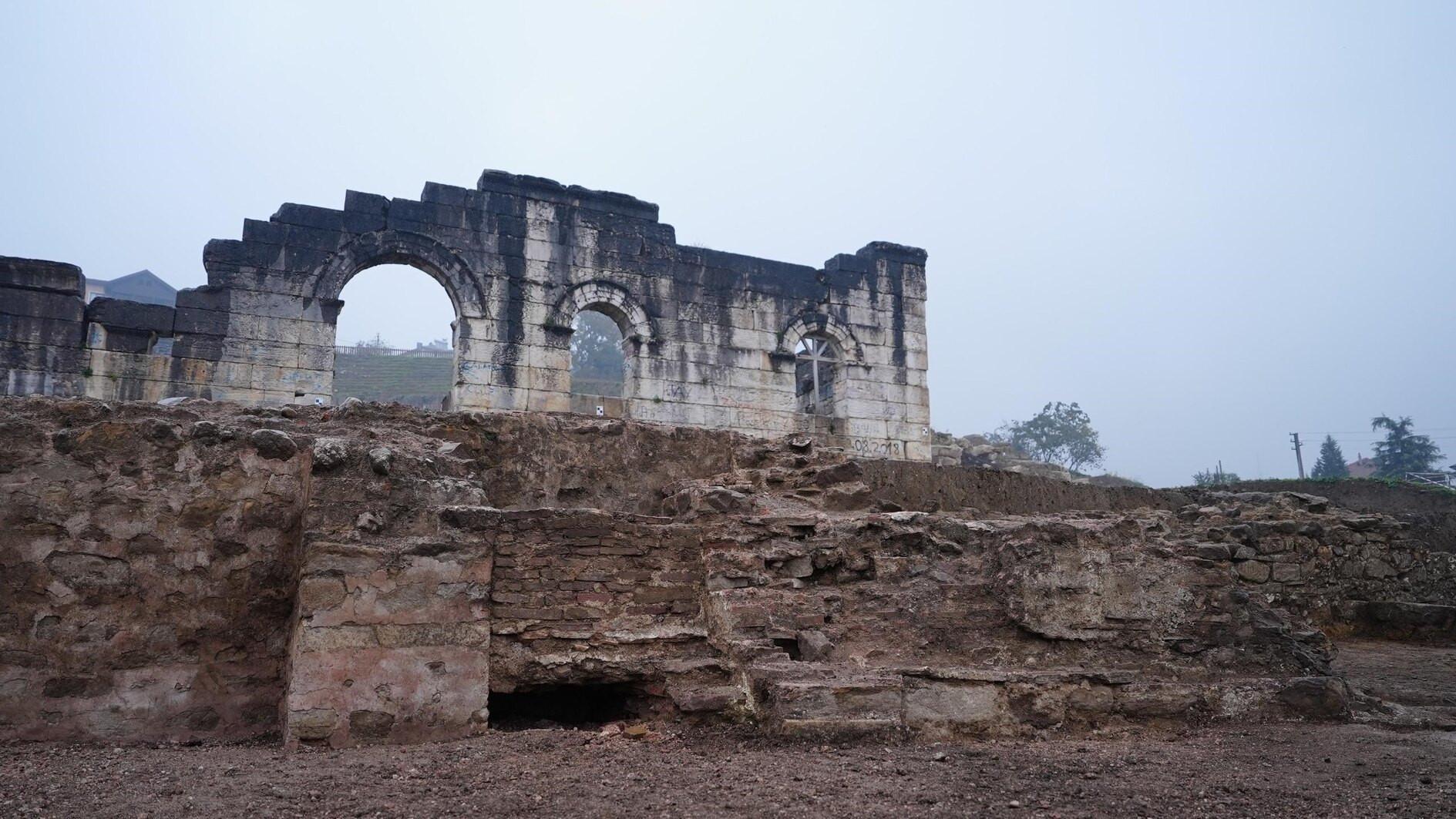
Recent archaeological excavations at the Konuralp Ancient Theater in the ancient city of Prusias ad Hypium, located in the northwestern province of Düzce, have uncovered an ancient network of terracotta pipes, along with the remains of a Byzantine church.
The excavation team discovered the terracotta pipes on the southern side of the theater’s stage building, which likely served as infrastructure for both the theater and surrounding buildings.
The pipes, made from baked clay, suggest a sophisticated water distribution system that dates back to at least the 4th century A.D.
“Wide and thick pipes were likely used for larger, public buildings, while smaller, thin conduits were possibly for private houses,” said Konuralp Museum Director İhsan Aslan, who oversees the excavation.
“We’re seeing a level of planning and infrastructure that points to a thriving community in this area.”
In addition to the pipe system, excavations uncovered the remains of a Byzantine church, including sections of an apse that extends in an east-west direction.
The team also identified remnants of a water channel running through the narthex, or entrance hall, referred to by locals as “Church water,” was part of an ancient aqueduct that funneled spring water from the theater’s slope to a fountain nearby.
Plans are now underway to restore the historical fountain to its original function, reconnecting it to the spring water as it was centuries ago.
Ninety-five percent of the excavations carried out in the ancient city by the Konuralp Museum Directorate for approximately five years have been completed.
Dating back to the third century B.C., the city has survived numerous earthquakes over the centuries, and remarkably, the theater's structural integrity has remained intact.
With the majority of the ancient structure exposed and final restoration stages underway, the theater is set to open for tourism in 2025.
As excavations continue at Prusias ad Hypium, archaeologists hope to uncover even more details that will enhance our understanding of the region’s historical and cultural heritage.